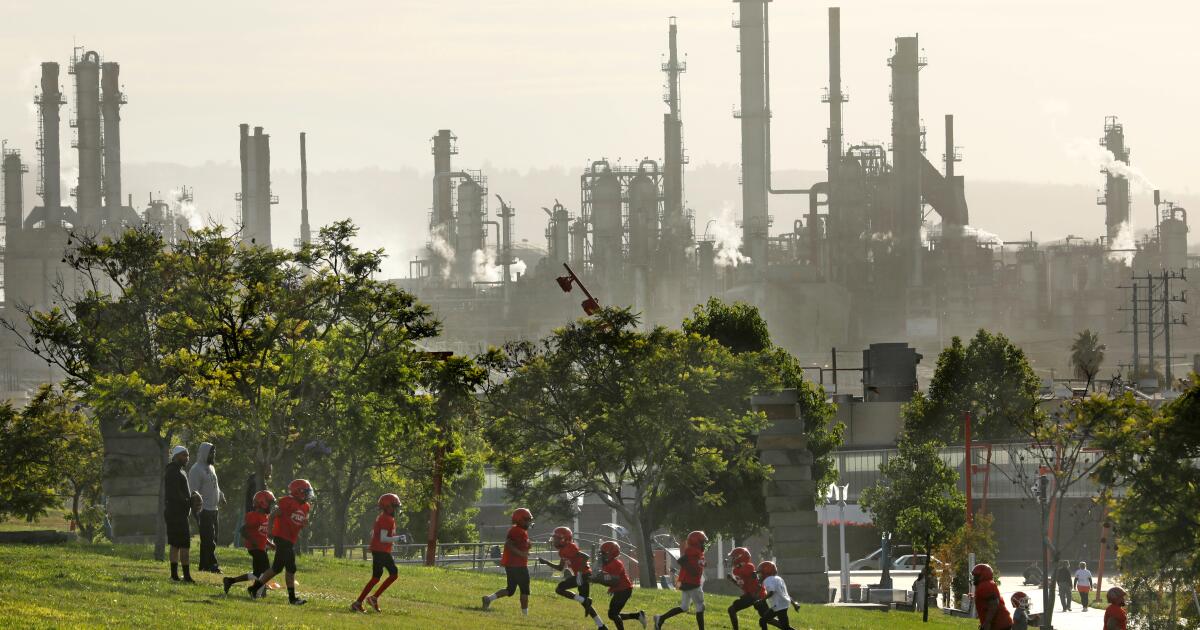For more than a century, the sprawling Phillips 66 oil refinery complex has dominated a vast tract of southern Los Angeles County.
Its massive fuel storage tanks, distillation towers and sprawling pipeline network loom over Carson and Wilmington and are a long-standing source of community concern.
But in recent years, complaints of acrid odors, fiery accidents, soot and harmful emissions have gained new resonance as officials become more sensitive to accusations of environmental injustice.
So when Phillips 66 announced recently that it would shutter the complex late next year, it came as a welcome surprise to many, according to Julia May, senior scientist for Communities for a Better Environment.
“We were surprised this happened so fast and without much warning, but it’s probably not a surprise it was this particular facility,” May said. “Phillips 66 in L.A. is an old refinery. It’s had a lot of problems with flaring and fires in recent years and high levels of pollution. And it may have just been out-competed by the rest of the refineries.”
The closure coincides with California’s waning fuel demand due to electric vehicles and the state’s broader transition away from burning petroleum products. The announcement has fueled speculation among environmental groups and residents who wonder what operations might replace refinery infrastructure.
At the same time, May and others hope there will be a plan to assist the refineries’ 600 workers and 300 contractors to transition into other sectors of the economy.
“The transition on fossil fuels is essential to avoid the existential threat of climate change, which is happening faster than predicted,” May said.”But we do have the means to do it while protecting workers’ livelihoods and frontline communities.”
The refinery facilities have been cited repeatedly by local air regulators for releasing toxic chemicals, including cancer-causing benzene. Their flare systems alone are permitted to torch flammable gases and emit tens of thousands of pounds of noxious sulfur dioxide emissions to avoid pent-up pressure during oil refining.
Among the most notable episodes, two large fires broke out at the Carson facility in 2019, causing thick plumes of smoke and hazardous chemicals to drift offsite and into nearby communities. Regulators found refinery workers had repaired a pump that had been malfunctioning, but they failed to inspect the equipment following repairs. Phillips 66 was later cited by the U.S. Environmental Protection Agency.
Newsletter
Toward a more sustainable California
Get Boiling Point, our newsletter exploring climate change, energy and the environment, and become part of the conversation — and the solution.
You may occasionally receive promotional content from the Los Angeles Times.

